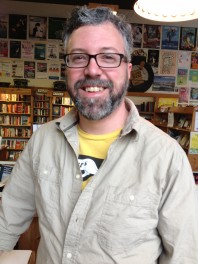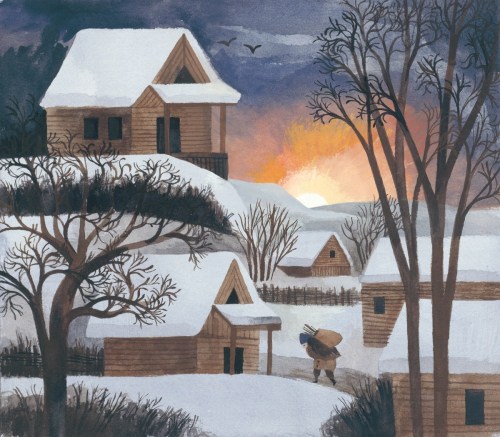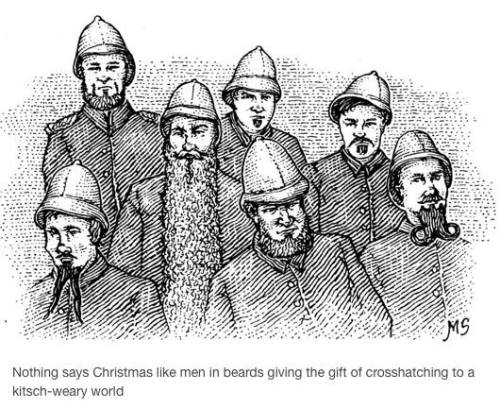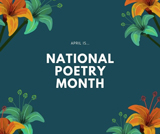
It is now December, & … strange stuffs will be well sold, strange tales well told, strange sights much sought, strange things much bought, and what else as falls out. To conclude, I hold it the costly Purveyor of Excess, and the after-breeder of necessity, the practice of Folly, and the Purgatory of Reason. Farewell.
So wrote Nicholas Breton in 1626 in Fantasticks: Serving for A Perpetuall Prognostication. Cheerful guy. You might think that I, having worked more than twenty Christmas retail seasons, would share his Scrooginess, but I don’t. I still love the strange stuffs sold and the strange tales told, however excessive the season sometimes gets.
In fact, the winter holidays are my favorite because of the old traditions. And I do mean the old ones: green boughs, fires, huddling together against the cold, making joyful noise to celebrate the cessation of darkness and the return of the light. And Santa! No doubt he had a different name back then, but he’s been driving his reindeer across Europe for at least 30,000 years.

At least I assume that’s what the painters in the caves at Lascaux were trying to depict.
Some fun reindeer facts: Reindeer eyes change color between summer and winter to adapt to the widely varying levels of light in the high north. “The reflection from reindeer eyes is yellow-green in summer … but deep blue in winter,” says Karl-Arne Stokkan, a professor at the University of Tromsoe in Norway, Due to the extremely limited light in the far northern winter, reindeer’s eyes need to be much more sensitive to light then than in summer. The blue color during the darkest months of the year helps scatter more incoming light and results in better vision, says Stokkan. Also, reindeer can’t walk too far without answering the call of nature. In fact, they are unable to walk and pee at the same time, so they have to take a bathroom break roughly every six miles. In Finnish, this distance is known as “poronkusema” or “reindeer’s piss” and was an old-fashioned description of distances in the countryside.
But I digress. H.P. Lovecraft alludes to the immemorial nature of winter holiday traditions in his short story “The Festival,” wherein he writes, “It was the Yuletide, that men call Christmas though they know in their hearts it is older than Bethlehem and Babylon, older than Memphis and mankind.“ I’m not a huge fan of his in general, but I do love that opening line and its orotund conclusion.
Susan Cooper, the Newbery Award-winning writer, also harkens back to ancient ways in a poem she composed for a theatrical revel in 1974. It’s been performed annually ever since, and this year has been published as the picture book The Shortest Day, with illustrations by the Northwest’s own Caldecott honoree, Carson Ellis.

As the publisher describes, it “captures the magic behind the returning of the light, the yearning for traditions that connect us with generations that have gone before—and the hope for peace that we carry into the future.” Shakespeare talked about much the same things—sunrise, safety, and beneficial sorcery—in the first act of Hamlet:
Some say that ever ’gainst that season comes
Wherein our saviour’s birth is celebrated
The bird of dawning singeth all night long;
And then, they say, no spirit can walk abroad,
The nights are wholesome; then no planets strike,
No fairy takes, nor witch hath power to charm,
So hallowed and so gracious is the time.
All this to me is what’s most worth celebrating at this time of year. That and crosshatching.
Happy holidays!
James Crossley is the manager of Madison Books, a neighborhood bookstore in Seattle, which can be found online at madisonbks.com. For past musings from James about light and darkness, click here.



